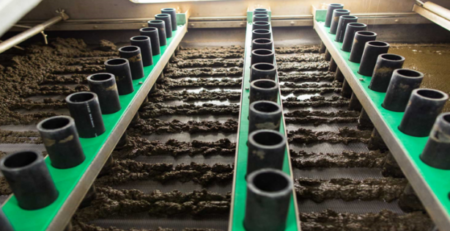Advancements in Tailings Storage Facility Design and Construction for Wastewater Treatment
Wastewater treatment is an essential process in the mining industry. This measure guarantees that the water employed in the mining processes remains untainted and harmless to the ecological surroundings. Tailings are the waste materials that remain after the mineral extraction process and are a significant contributor to wastewater in mining operations. Tailings are typically stored in a TSF, which is a containment structure designed to hold waste materials.
Throughout the years, the mining sector has come to acknowledge the significance of environmentally conscientious mining practices. As a result, there have been significant advancements in TSF design and construction for wastewater treatment.
The occurrence of tailings dam failures causes significant environmental and human health impacts as well as serious economic losses. This article discusses a few key factors that can contribute to the safety of a tailings pond.
The Importance of Tailings Management
Tailings are a significant contributor to water pollution in the mining industry. If not managed correctly, tailings can cause long-term environmental damage, affecting aquatic life and groundwater quality.
Effective tailings management is critical to ensure that mining operations do not harm the environment. Properly designed and constructed TSFs can prevent water pollution by containing tailings and ensuring that they do not leach into the surrounding environment.
Advances in Tailings Storage Facility Design
Recent years have witnessed notable headway in the engineering of Tailings Storage Facilities (TSFs), which have tackled numerous problems correlated with conventional TSFs. These advancements include:
Thickened Tailings
Thickened tailings are created by adding a flocculant to the tailings, which causes them to settle and thicken. The thicker tailings are then pumped to the TSF. Thickened tailings take up less space than traditional tailings and are less prone to failure.
Dry Stacking
Dry stacking involves filtering the tailings to remove excess water before stacking them in a containment area. This method reduces the amount of water that needs to be stored, making it a more efficient method of tailings storage. Dry stacking also reduces the risk of dam failure and minimizes the environmental impact of tailings storage.
Paste Tailings
The synthesis of paste tailings transpires by amalgamating the tailings with a binding agent, like cement, to engender a paste-resembling material. The paste is then pumped to the TSF, where it solidifies.
Filtered Tailings
Filtered tailings are created by dewatering the tailings using a filter system before they are deposited in the TSF. The approach yields a desiccated tailings output that occupies a reduced area and diminishes the volume of water necessitating storage. Filtered tailings also reduce the risk of dam failure and improve the overall environmental performance of the tailings storage.
Pond Design
Tailings pond design is used to manage waste that is produced during the extraction of materials such as metals and minerals. This waste can be toxic if not properly managed, so it must be handled correctly to prevent damage to the environment.
Tailings ponds are designed to be shallow so that they can accommodate the amount of wastewater generated during the extraction process. The water is then either decanted to reclaim ponds or sent directly to the processing plant.
The type of ponds that are used to store the water can have a big impact on the wastewater recovery process. If the pools have considerable depth, it is imperative to erect them in a manner that would prevent the leakage of hazardous effluent into the surrounding ecosystem.
A good way to control seepage is by using drainage zoning that will trap and concentrate seepage as it accumulates. Common zoning types include blanket drains, chimney drains, and finger drains.
Tailings pond construction is an important aspect of wastewater recovery. Advancements in tailings pond design and construction have made it possible to remove toxic wastewater and reclaim valuable minerals that may have been lost during the mining process.
Pond Maintenance
Tailings ponds are a common storage solution for waste materials generated from mining processes. Oil sands and coal mining operations, as exemplified by the aforementioned, produce voluminous amounts of hazardous effluent, which may engender ecological hazards and necessitate protracted measures for confinement and safeguarding.
A tailings pond must be designed to prevent seepage from entering the groundwater or soil surrounding it. Typically, these ponds are lined with compacted sand and fine clay. The clay has a low permeability rate which helps to prevent the flow of the tailings water into the groundwater. Vertical pumping wells are also installed to monitor the quality of the groundwater and any seepage that may occur underneath the dyke or dam.
Tailings pond maintenance is an ongoing requirement for mine operations. If a tailings pond becomes contaminated, it must be remediated and cleaned up as quickly as possible to protect the surrounding environment.











